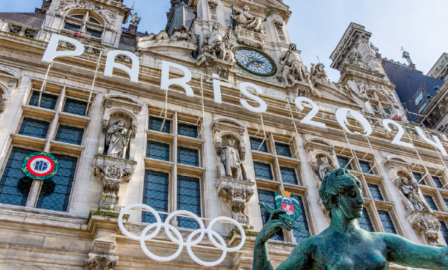Improving Engagement with Multicultural Shoppers in Luxury Retail
The definition of luxury is constantly evolving to reflect our society, whether that be relevant art movements, societal culture shifts, historical events, or new innovations in technology and science. The rich mix of cultures, identities, and heritage in society today further highlights any deficits in diversity that exist amongst luxury retail brands. There has been significant growth in luxury consumer spending specifically among diverse consumer groups, and it’s imperative that companies use this momentum to evaluate how they relate and interact with these diverse groups to cultivate a diverse community and enrich their brand.
While this increased spending is felt globally, the US alone has seen a 35% growth in luxury goods spending by consumers of color. Companies embracing the integration of DEI in their products, marketing, and talent are already feeling the benefits. For example, Fendi, an Italian luxury fashion house, has fully embraced integrating diversity into their brand. Their teams have featured models from various ethnic backgrounds, showcased culturally inspired designs, and diversified their executive team. These efforts have proven successful, with a 13% increase in their international sales, supplemented by substantial growth in their other markets globally.
But how should you begin to evaluate your own company’s commitment to DEI? Start by asking yourself these five questions to understand what you need to build a successful multicultural engagement strategy in luxury retail.
Key Questions to Ask
1. Who are you trying to reach?
The first step to authentically engaging with diverse consumers is to understand who you are trying to reach. It’s both overwhelming and unrealistic to imagine reaching all marginalized groups. Focus instead on a specific group, and research their buying habits, preferences, and lifestyles. Understanding specific insights into customs, traditions, and even cultural events will unlock new ways to approach and integrate this group into your current brand profile. There may be a concern with or challenge of maintaining your current customer base while expanding into diverse markets, but it should be kept in mind that this isn’t necessarily an expansion of how many consumers are buying your brand, but rather an enrichment of the current consumers investing in your products.
2. Are your brand’s values aligned with the values of the demographic you would like to reach?
One way to benchmark your target demographics is seeing if your brand values align with your target audiences’ values. If not, this does not mean your brand should adapt to the consumer. Instead, seek out a consumer group that carries the legacy values of your brand. Doing so will cultivate a more authentic relationship with new consumers and strengthen the ties of your brand to luxury. A prime example of this methodology is seen with The LOUIS XIII x LaQuan Smith Collection. This limited-edition collaboration synonymizes the timeless cognac experience with the delicate artistry of high fashion. Louis XIII strives to create lasting and personal bonds with their consumers, choosing to encourage clients that enjoy the brand and the product specifically. Collaboration with fashion is an ingenious way to work with minority creators that share the same values as the brand as there are few art mediums more personal and innovative as fashion. Creating relationships in communities that share the same values as your brand will cultivate an authentic relationship that will forge a place for your brand in any targeted community.
3. In your business, are diverse voices being amplified in positions of influence?
Creating a thorough and authentic engagement strategy for diverse audiences requires diverse perspectives. If internal talent understands the communities that are currently being reached, a brand can have a deeper, more nuanced understanding of the preferences of the target audience. After all, different perspectives can bring value to every aspect of the decision-making process. Whether that be design choices for new products or in the executive suite deciding the direction of the company, diverse perspectives can strengthen your luxury retail brand and boost your brand reputation. Diversifying your workforce does not compromise any existing image or jeopardize the core consumer; it expands on the outward-facing brand perception as a method of accelerating social growth. Your workforce is the life blood of your branding, and looking inward presents the opportunity to ensure that there is diversity in each department. Diverse voices need to be present when decisions are being made, and luxury retail brands must intentionally include diverse perspectives throughout all stages of their business.
4. How can you create an authentic community relationship?
Besides driving internal change, building external-facing trust and a reputation as a company of change is a great way to craft an authentic community relationship and future-proof your brand. Take the luxury watch maker Rolex, for example: their brand saw increased engagement with diverse consumer groups and a boost in their employer brand, attracting top talent in the sector. How? By investing in DEI and receiving a diversity certification. Rolex was able to have demonstratable commitment to their improvement as a luxury brand and their goal of increased diversity. Authentic brands come from authentic voices, and there needs to be a genuine commitment to understanding and representing diverse perspectives.
5. How can you create omnichannel communications that leverage existing language and communication channels?
Consistent and uniform brand messaging across platforms is key to success, as companies have been and continue to push for a seamless omnichannel experience for their users. Studies even show that in social media usage, 77% of African American identifying respondents and 80% of Hispanic identifying respondents use at least one social media site, as compared to 69% of white consumers. Reaching diverse populations is not the challenge; authentically connecting with them is. It’s important to create a multi-stream image that your brand values and respects cultural identities and the identities of its consumers, and providing an accessible brand image to consumers is one step above. Understanding where your brand lands and then adapting to the native language and vernacular of your target audience can help propel the image of your brand to previously unreachable consumers. Fendi, for instance, has increased their brand visibility by using these methods and adapting to their target audience through a collaboration with Pokémon and FRGMT. This release aligned with the Lunar New Year, celebrating the year of the dragon with merchandise showcasing “dragon-type” Pokémon. The collaboration goes beyond the physical, extending to the digital world by providing exclusive products within the widely successful PokemonGO game. While the financial benefits of this collaboration have yet to be seen, Fendi has undoubtably increased their brand visibility by appealing to a new target audience using their language.
Getting Started with A Multicultural Engagement Strategy in Luxury Retail
Enacting meaningful change in luxury retail both internally and through consumer engagement can not only create a safer environment for your consumers to experience your product but benefit fiscally through company growth. Luxury retail status can be maintained through these efforts, as expanding the communities your brand reaches does not dilute the reputation of your brand or your customer-base, but rather creates an unparalleled enrichment to your brand identity. Asking yourself these questions about your brand and your engagement strategy can open the doors to a new culmination of perspectives that solidifies the legacy of a brand and the future that it can provide.
Learn more about embracing DEI in luxury retail or connect with one of our retail or DEI experts today!



